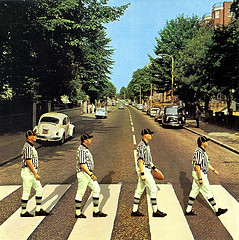
…The more they stay the same. That is one conclusion University of Maryland sociologist John Robinson draws from the results of the 2012 American Time Use Survey. Despite the global economic downturn in 2008 and subsequent elevated levels of unemployment in the U.S., the breakdown of how Americans spend their time has changed little over the past five years.
In 2007, Americans reported working an average of 7.6 hours per day. Five years later, in 2012, employed people worked for 7.7 hours each day, while dedicating two hours to chores and five to six hours to leisure (approximately half of that leisure time is spent watching television).
Robinson explained the similar time use as social inertia:
We went through the biggest recession in history, we went through the most economic turmoil. And yet we see very little decline in the time that people spend working.
Other notable statistics include the growing parity in how much time men and women spend more equal amounts of time working, doing housework, and taking part in the leisure activities than they did 50 years ago. Additionally, U.S. citizens are found to be increasingly sedentary. Between leisure time spent in front of the television and sedentary work environments, Americans use little of their time in physical activity.









